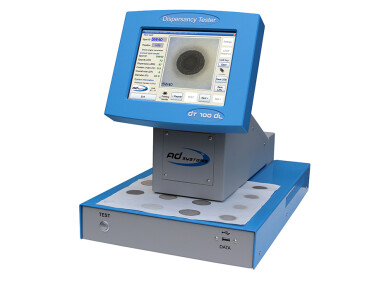Oil analysis
How is Time of Flight Mass Spectrometry Used for Oil Analysis?
May 13 2022
Time of Flight Mass Spectrometry (TOFMS), an analytical technique used to identify and quantify unknown compounds, is one of the most useful tools available for petrochemical analysis. The mass spectrometry method uses an electric field to accelerate ions. As the ions travel towards the detector, mass-to-charge ratio is measured using a time-of-flight calculation. Data reveals the presence of individual compounds in a sample and allows analysts to map the unique physical and chemical properties of oil samples.
Combining TOFMS with other techniques
TOFMS is a useful analytical petrochemical analysis when used alone. However it’s often combined with other methods to heighten sensitivity and improve results. For example, a study published in the peer-reviewed journal Fuel introduced Comprehensive Two-Dimensional Gas Chromatography coupled with Time of Flight Mass Spectrometry (GC × GC-TOFMS) as a tool for biomarker analysis of Colombian oils. The combination of techniques offers unique benefits and overcomes some of the challenges encountered with other petrochemical analysis methods.
“Comprehensive two-dimensional gas chromatography with time of flight mass spectrometry (GC × GC–TOFMS) is an option to overcome the limitations of the 1D GC–MS (coelutions) and 1D GC–MS/MS (lack of full mass spectra),” reads the study.
The method is used during oil prospecting and allows companies to meet mandatory regulations for qualitive and quantitative geochemical parameters. This includes data on thermal maturity and the geological source of the oil. The detection of C27-C30 steranes, which are found in marine algae and suggest oil has oceanic origins, is one application for GC × GC-TOFMS spotlighted in the study.
Advances in chemometric software have made GC × GC-TOFMS faster, easier and more accurate. The technique is one of many set to make an appearance at the upcoming PEFTEC conference in Rotterdam.
Time of Flight Mass Spectrometry for spill clean-ups
As well as mapping the unique physical and chemical properties of oil, Time of Flight Mass Spectrometry is a valuable tool for environmental scientists developing spill clean-up strategies. A report published in the journal Analytical Methods introduced rapid gas chromatography quadrupole time-of-flight mass spectrometry as a method for detecting and quantifying sulphur heterocycles (PASHs), polycyclic aromatic hydrocarbons (PAHs) and alkylated forms in crude oil spills. The method allowed analysts to analyse more than 77 individual crude oil compounds.
“This newly developed method was applied to spilled crude oils, demonstrating its potential in toxicological study as well as oil spill forensic investigation,” reads the abstract.
Time of Flight Mass Spectrometry isn’t the only method used for petrochemical analysis. Find out more about alternative methods such as Gas Chromatography (GC) for compositional analysis and Near Infrared (NIR) Analysis to monitor paraffin levels, in ‘Which Instruments & Techniques Are Used for Fuel, Petrochemical & Oil Analysis?
Digital Edition
PIN 26.1 Feb/Mar 2025
March 2025
Analytical Instrumentation - Elemental Analysis for Quality and Process Control at Refineries, for Lubricants and Wear Metals in Engine Oils - Synthetic Lubricants: New Developments - Scaling...
View all digital editions
Events
Apr 14 2025 Moscow, Russia
Apr 15 2025 Moscow, Russia
Apr 22 2025 Hammamet, Tunisia
Apr 22 2025 Kintex, South Korea
Solar & Energy Storage Summit 2025
Apr 23 2025 Denver, CO, USA

.jpg)

















